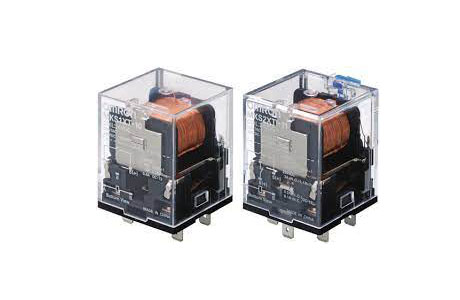Key Takeaway
An impedance relay is a protective device used mainly in the protection of medium-length transmission lines. It operates based on the impedance, which is a combination of resistance and reactance, measured in a circuit. When the impedance at a fault point on the line drops below a preset value (often denoted as Z), the relay activates. This type of relay is crucial because it helps prevent damage by quickly responding to overcurrent situations caused by faults. By monitoring voltage and current, the impedance relay ensures the stability and safety of electrical transmission systems.
Definition and Working Principle
An impedance relay measures the impedance between the relay location and the fault location. The working principle involves comparing the measured impedance with a preset value. When a fault occurs, the impedance between the fault and the relay decreases. If this measured impedance falls below the relay’s set value, the relay operates to isolate the fault.
Impedance relays use voltage and current measurements to calculate impedance. They continuously monitor these parameters, and upon detecting a significant drop in impedance, they send a signal to trip the circuit breaker, thereby isolating the faulty section. This swift action helps in minimizing damage and maintaining system stability. The relay’s ability to measure and respond to impedance changes makes it an effective tool for distance protection in power systems.

Applications in Distance Protection
Impedance relays are primarily used in distance protection, which is crucial for protecting transmission lines. Distance protection involves detecting faults at various points along a transmission line and isolating them quickly to prevent widespread outages. Impedance relays are ideal for this application because they can accurately determine the distance to a fault based on impedance measurements.
In addition to transmission line protection, impedance relays are also used in protecting substations and distribution networks. They help in identifying and isolating faults in these systems, ensuring that only the affected section is disconnected while the rest of the network remains operational. This selective isolation is vital for maintaining the reliability and efficiency of power systems.
Moreover, impedance relays are employed in backup protection schemes. In case the primary protection fails, impedance relays provide an additional layer of security, ensuring that faults are detected and isolated promptly. Their versatility and accuracy make them indispensable in various protective roles within power systems.
Types of Impedance Relays
There are several types of impedance relays, each designed for specific applications and operational requirements.
Definite Time Impedance Relay: This relay operates after a definite time delay once the measured impedance falls below the set value. It is simple and effective for certain applications where time-coordinated operation is necessary.
Inverse Time Impedance Relay: The operation time of this relay is inversely proportional to the measured impedance. The lower the impedance, the faster the relay operates. This type is useful for applications requiring quick response times to severe faults.
Directional Impedance Relay: This relay only responds to faults in a particular direction. It is equipped with a directional element that ensures the relay operates only for faults in the specified direction, providing selective fault isolation.
Mho Relay: Also known as a admittance relay, the Mho relay is a distance relay that measures admittance. It is widely used for protecting long transmission lines due to its ability to provide a circular characteristic on the impedance plane, which simplifies fault detection and isolation.
Understanding these types helps in selecting the appropriate relay for specific protection needs, ensuring effective and reliable operation.
Setting and Adjusting Impedance Relays
Setting and adjusting impedance relays is a critical task that requires careful consideration of system parameters and protection requirements. The settings typically involve defining the impedance reach, time delays, and directional characteristics.
Impedance Reach: This is the distance along the transmission line that the relay is set to protect. It is determined by calculating the impedance of the protected line segment and setting the relay to operate within this range.
Time Delays: Time delays are set to coordinate with other protection devices in the system. This ensures that the relay operates after the primary protection but within an acceptable time frame to prevent system damage.
Directional Characteristics: For directional impedance relays, setting the directional characteristics involves configuring the relay to respond only to faults in the desired direction. This requires precise calibration to ensure accurate fault detection.
Testing and fine-tuning these settings through simulation and real-world testing are essential to ensure the relay operates correctly under fault conditions. Accurate settings enhance the reliability and effectiveness of impedance relays in power system protection.
Benefits and Limitations
Impedance relays offer several benefits, making them a valuable tool in power system protection.
Accuracy: They provide precise fault location based on impedance measurements, allowing for quick and effective fault isolation.
Versatility: Suitable for various applications, including transmission line, substation, and distribution network protection.
Selective Isolation: Ensures that only the faulted section is disconnected, maintaining the integrity of the rest of the system.
Backup Protection: Provides an additional layer of security in case primary protection fails.
However, there are also limitations to consider:
Complexity: Setting and adjusting impedance relays require detailed knowledge and careful calibration.
Cost: These relays can be more expensive than simpler protective devices.
Dependency on Accurate Measurements: Their performance relies heavily on precise voltage and current measurements, which can be affected by external factors.
Understanding these benefits and limitations helps in making informed decisions about their deployment in power systems, ensuring optimal performance and protection.
Conclusion
Impedance relays play a crucial role in power system protection, offering accurate fault detection and isolation through impedance measurement. Their application in distance protection, versatility in different protective roles, and the benefits they provide make them indispensable for maintaining system reliability and stability. By understanding their working principle, types, settings, and benefits, newly joined engineers can effectively incorporate impedance relays into their protection schemes, contributing to the safety and efficiency of modern power systems. Embrace the knowledge and technology of impedance relays to enhance your expertise and ensure robust power system protection.
